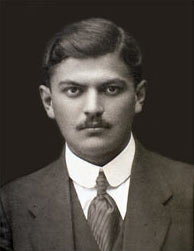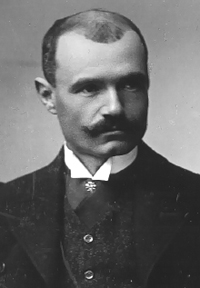Sava Petrović may refer to:
- Sava Petrović (prince-bishop) (1702–1782), Metropolitan of Montenegro
- Sava Petrović (botanist) (1839–1889), Serbian botanist and doctor of medicine
- Sava Petrović (painter) (1788–1857), Serbian icon painter and portraitist
Sava Petrović may refer to:
Sava is a common male personal name in south Slavic languages, and is also used in Romanian, where it is also a surname. Perhaps the most famous example is the Serbian medieval prince turned monk Saint Sava. In Croatia and Bosnia and Herzegovina, Sava could also be a female name, a result of the tradition of naming female children after rivers – in this case, after the river Sava.

Josif Pančić was a Serbian botanist, a doctor of medicine, a lecturer at the Great School, and the first president of the Serbian Royal Academy. He extensively documented the flora of Serbia, and is credited with having classified many species of plants which were unknown to the botanical community at that time. Pančić is credited with discovering the Serbian spruce. He is regarded as the father of Serbian botany.

Sava Šumanović was a Serbian painter. He is considered to be one of the most important Serbian painters of the 20th century. Šumanović's opus includes around 800 paintings as well as 400 drawings and sketches. He was executed during the genocide of Serbs in the Independent State of Croatia.

Sava Petrović was the Metropolitan of Cetinje between 1735 and 1781, ruling what is known in historiography as the Prince-Bishopric of Montenegro; the polity in the hands of the Petrović-Njegoš dynasty. He succeeded his relative Danilo I as Metropolitan in 1735, having served as Danilo's coadjutor since the 1719, when he was consecrated by Serbian Patriarch Mojsije I.

Nadežda Petrović was a Serbian painter and one of the women war photography pioneers in the region. Considered Serbia's most famous impressionist and fauvist, she was the most important Serbian female painter of the period. Born in the town of Čačak, Petrović moved to Belgrade in her youth and attended the women's school of higher education there. Graduating in 1891, she taught there for a period beginning in 1893 before moving to Munich to study with Slovenian artist Anton Ažbe. Between 1901 and 1912, she exhibited her work in many cities throughout Europe.
Petrović is a South Slavic language patronymic surname literally meaning Peter's son, equivalent to the English last name of Peterson. In Eastern Slavic naming customs its counterpart is "Petrovich".

Mihailo Petrović Alas, was an influential Serbian mathematician and inventor. He was also a distinguished professor at Belgrade University, an academic, fisherman, writer, publicist, musician, businessman, traveler and volunteer in the Balkan Wars, the First and Second World Wars. He was a student of Henri Poincaré, Paul Painlevé, Charles Hermite and Émile Picard. Petrović contributed significantly to the study of differential equations and phenomenology, founded engineering mathematics in Serbia, and invented one of the first prototypes of a hydraulic analog computer.

Danilo I Petrović-Njegoš was the Metropolitan of Cetinje between 1697 and 1735, and the founder of the House of Petrović-Njegoš, which ruled Montenegro from 1697 to 1918.

Vasilije Petrović was the metropolitan bishop of Cetinje. Also, he was the author of the History of Montenegro, a book published in 1754. He ruled together with Sava Petrović, his cousin.
Zlata is a female given name of South Slavic origin meaning "golden". It is common amongst all South Slavic countries in the Balkans, such as Bosnia and Herzegovina, Bulgaria, Croatia, North Macedonia and Serbia. The name is popular in Bosnia because it is considered ethnically neutral amongst the three dominant Bosnian ethnicities: Bosniaks, Serbs and Croats. The name is derived from the South Slavic word zlato - from the Old Slavic root zolto (gold).

Church of the Holy Apostles Peter and Paul, known as the Topčider Church is the Serbian Orthodox Church, located in Topčider park, in the municipality of Savski Venac in Belgrade, the capital of Serbia. Built between 1832 and 1834, it was an endowment of Prince Miloš Obrenović, who was also its founder. It is located next to the Residence of Prince Miloš. The church was declared a cultural monument and protected by the state in 1949.
Arsenije Plamenac was the Metropolitan of Cetinje between 1781 and 1784, earlier the co-adjutor to Metropolitan Sava Petrović during the reign of Šćepan Mali (1767–73). Plamenac (Plamenać) was from Crmnica, and belonged to the tribe's most notable brotherhood, the Plamenac. His father, Raič, was a priest. His maternal uncle was Sava Petrović. Following the footsteps of his father, and being the nephew of Sava, he quickly elevated through the monastic ranks, becoming a hegumen before his ordination. Sava intended to appoint him his successor in 1766, but was met with opposition from the Montenegrin tribes. The tribes accepted Arsenije after Sava had gained the support of Šćepan Mali, an impostor of Peter III of Russia who sought to rule Montenegro. Šćepan Mali supported Plamenac because he felt at home in Crmnica, and believed he would more easily take control of the whole of Montenegro by the side of Plamenac than the Petrović. Vasilije Brkić, the Patriarch of Peć, who had fled to Montenegro, consecrated Plamenac as a bishop in 1767. After his death, he was succeeded by Petar I Petrović Njegoš.
Mihailo Petrović was an early member of the Serbian Chetnik Organization and the Society of Saint Sava. He participated in the early Chetnik struggles to liberate Old Serbia from Ottoman, Albanian and Bulgarian treachery (1903–1912), the Balkan Wars (1912–1913) and the Great War (1914–1918).
Pavle Petrović also variously spelled Pavel Petrovits, Paul Petrovits, Paulus Petrovitz, Paulus Petrovits and Pablo Petrovits was a Serbian painter. He can be considered among the first 19th-century European-trained painters who decided to make a living by traveling for forty-year across all continents, leaving portraits behind him that capture the best of European Romanticism of the time. His works can be found in museums and private collections in Serbia, Romania, England, India, China, the United States of America, Hawaii, Chile, Peru, Canada, Australia, Egypt, and Italy.

Natalija Cvetković was a Serbian war artist.

Sava Petrović (1839–1889) was a botanist and Doctor of Medicine. He is considered to be one of the most important Serbian botanists of the 19th century. Petrović was active in phyto-pharmacology, botany and medicine simultaneously, writing and publishing numerous scientific works. He is also remembered as a co-founder, like many of his peers, of the Srpsko lekarsko društvo in 1872. Also the same year his book "Medicinal Herbs"was published.
Sava Petrović was a Serbian icon painter and portraitist. He was the father of international portraitist Pavel Petrović, the globetrotter.